Before you make a purchase, you need to decide on the design. She may be:
- Folding
- Stationary
A folding table is usually set in a small kitchen. It takes up a little space, so that a small family has lunch, its area is quite enough, and in case of arrival, guests can be decomposed.
The folding mechanism is:
- Extendable: part of the countertop leans back, and the large countertop that forms forms moves relative to the legs until it is fixed.
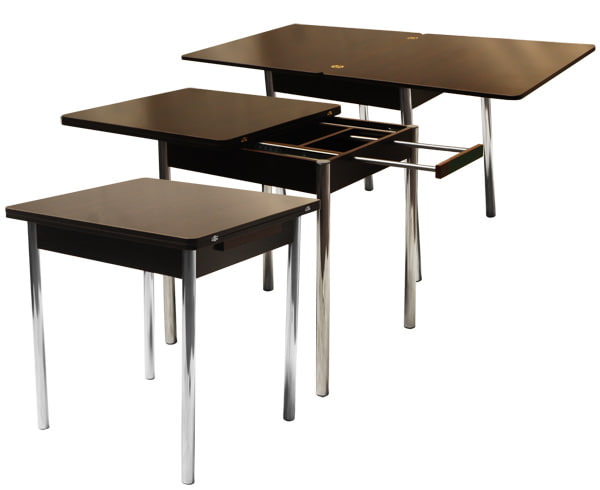
- Synchronously Sliding (Butterfly): you need to pull on one edge of the countertop, it will open in the middle and corrode. After this, it remains to get an additional part from the underframe and place it in the resulting gap.

- Swing-out: the tabletop must be rotated at a right angle and the upper part raised, then lower it to the base.
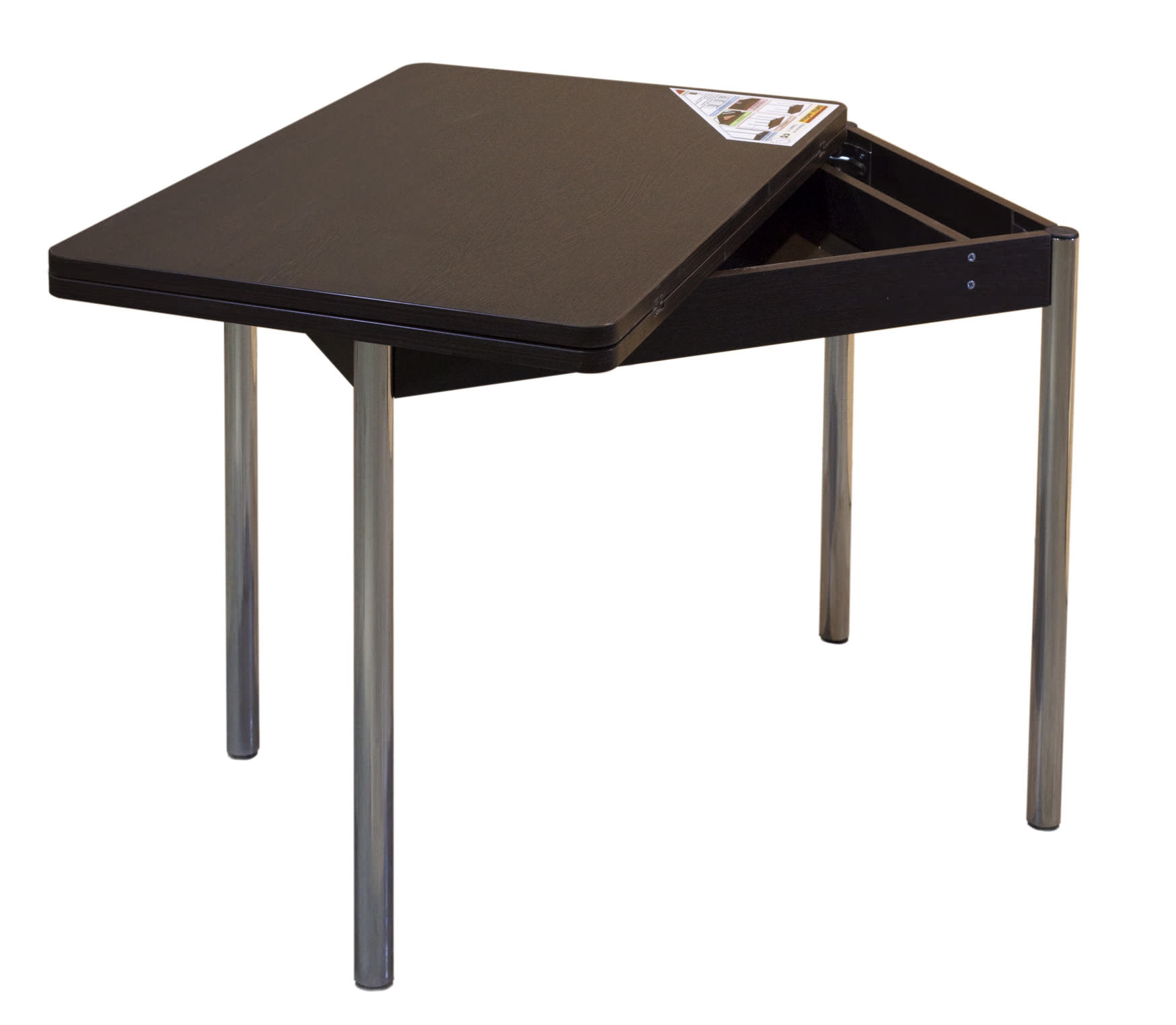
- Table-book: Suitable for very small kitchens. In the assembled state, the dimensions of the table do not exceed the dimensions of the cabinet or a small chest of drawers, a table-book in the interior of the kitchen takes up a small space.
- Table transformer: this design in the assembled state looks like a regular coffee table, and when disassembled - like a full-fledged dining table.
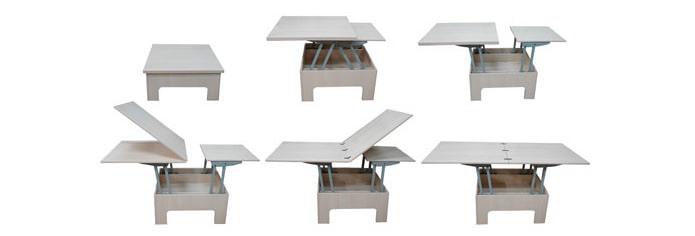
There are two drawbacks to such structures: due to the presence of the mechanism, they are rather heavy, and besides, they have a junction line in the middle, which does not look very aesthetically pleasing. Stationary, that is, non-folding tables in the interior of the kitchen look much more attractive. However, their size is limited by the size of the kitchen, and cannot be changed if necessary.
Dining table in the interior of the kitchen: basic dimensions
To correctly determine the size of the table, you need to consider how many people you want to seat at the same time - while this should be convenient for everyone. Ergonomics claims that each requires at least 70 cm of tabletop length. Therefore, if two people are to sit down on one side, the length of the table cannot be less than 140 cm. Otherwise, you will have to “cramp”.
Three persons can be placed at the square table, set on one side against the wall - in case the side length is at least 70 cm. A convenient rectangular table should be at least 75 cm wide and round - 90 cm in diameter. For a small kitchen, the optimal size of the countertop is 60-80 cm, in large kitchens-dining rooms - from 120 cm.
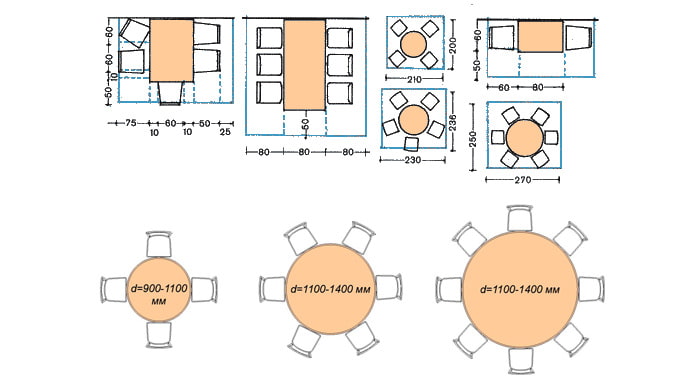
Kitchen table material in the kitchen interior
The look of the table and how it will look in the interior depend on what material the tabletop will be made of. The material of the underframe also matters, but it affects strength rather than appearance. In the market you can find models whose worktops are made of the following materials:
- MDF. This is the most budget option. The outer surface of the countertop can simulate natural materials. A table in the interior of the kitchen with a MDF worktop looks good, and has sufficient resistance to mechanical damage and humidity, excluding joints with the edge. If water gets there - the chipboard plate, of which the base consists, may swell and deform. That is why such tables have a short service life.
- Tree. The traditional and most popular option.The tree withstands moisture, has an attractive appearance, when coated with special compounds it acquires dirt-repellent properties. The kitchen interior with a large table made of wood looks solid and expensive. Wooden furniture lasts a long time, although it requires a careful attitude and periodic restoration.
- Stone (natural or artificial). The most strong and durable material. Stone countertops can be of almost any shape, and in the case of artificial stone - and color. It is a beautiful, damage-resistant material that does not absorb dirt. It is easy to wash, colonies of bacteria or fungi do not form on it.
- Glass. Glass tables in the interior of the kitchen occupy a special place. They look very elegant and can decorate any kitchen. In the large kitchen-dining room they emphasize exclusivity and add shine, and in small rooms due to the effect of "invisibility" will not take up much space.
- Ceramic tile. Tiled countertops look very impressive. Caring for such a table is simple - just wipe it with a damp cloth. Tiles can imitate wood or natural stone, such as marble. The tabletop can also be decorated with patterns or mosaics made of small tiles. An interesting interior solution is the tile on the countertop, which coincides with the tile on the kitchen “apron”.
- Plastic. Material gaining popularity. Its advantages are lightness, ease of care, relatively low cost, the ability to choose a table of almost any color or without it at all - transparent. Modern plastic is resistant both to moisture and temperature, and to UV radiation, which means that its service life is quite long.
There are also models from combined and exotic materials, for example, from saw cut wood or a combination of glass and leather. Such tables are quite expensive, and are used in kitchens with exclusive interiors.
Table color in the interior of the kitchen
The color of the countertops must be selected taking into account the style in which the kitchen is decorated. Often color is determined by the material, but there are options. For example, a wooden table can be left natural, covered with a protective compound.
In this case, the color of wood and its texture will be one of the decorative elements of the situation. This is appropriate in the "village" styles, such as country, Provence, in the loft style, as well as some others. However, in the event that you want to get an interior in a strict and restrained style, for example, minimalism, you can paint a wooden table the color of furniture and walls so that it does not stand out from the background of its surroundings.
A dining group can be an interior dominant, while a contrasting and fairly bright color is chosen for it. For example, with white walls and furniture, the table may be bright red or orange. It all depends on the chosen style and your taste.
A white table in the interior of the kitchen is the most universal solution. In both classical and modern style directions, it will look organic.
The shape of the dining table in the interior of the kitchen
The shape of the table affects not only its performance, but also its perception in the interior. Let's consider the possible options.
- Rectangle. The most traditional, roomy and comfortable form. At such a table you can place quite a lot of people, it is convenient to put it against the wall, it takes up little space, especially when compared with round tables. You can put it in a corner or lean it against one of the walls with the end side, thus dividing the room into conditional zones.
- Oval. Tables of this shape have significant dimensions, since their width cannot be less than 90 cm, the length exceeds 110 cm, and usually even more. They are suitable only for kitchens with a large area, because there should be enough space for furniture or seating (at least 80 cm).
- A circle. The round table in the interior of the kitchen looks very elegant, but rather demanding for placement - at least 80 cm should remain from all sides from it to the nearest obstacle, as in the case with the oval table, otherwise it will be inconvenient to move around.
- I got it. Such a table in the interior of the kitchen is not common, but in fact it is very convenient, primarily because it has no sharp corners, which is especially valuable in small rooms. Typically, semi-ovals are placed in the center of the dining area, with the straight side to the wall.
Tip: If you want your kitchen table in the interior of the kitchen to always look decent, follow the rules for caring for it. At least once a week, it is necessary to wipe not only the countertop, but also the underframe with a damp cloth, removing dirt with mild detergents. Never use a knife and other sharp objects without laying a special board under them - scratching a table is easy, restoring it to its original appearance is difficult, and sometimes impossible.

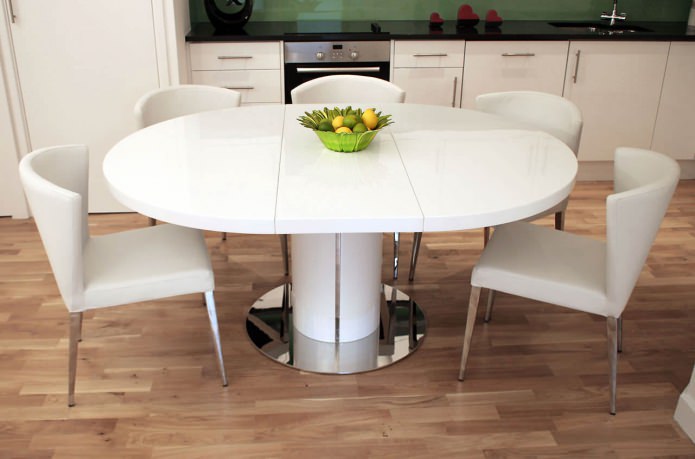
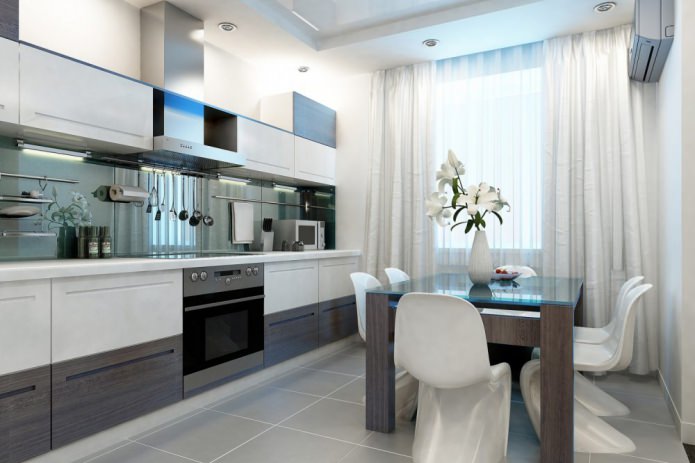

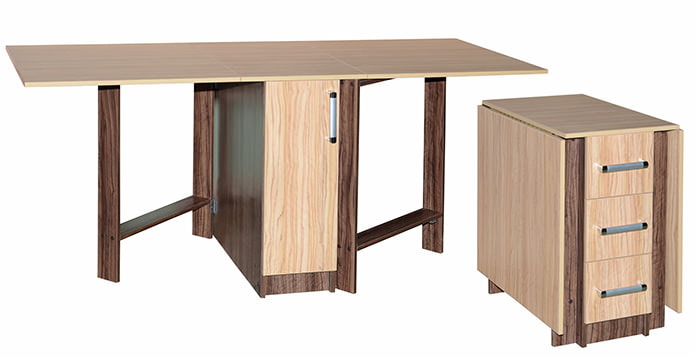
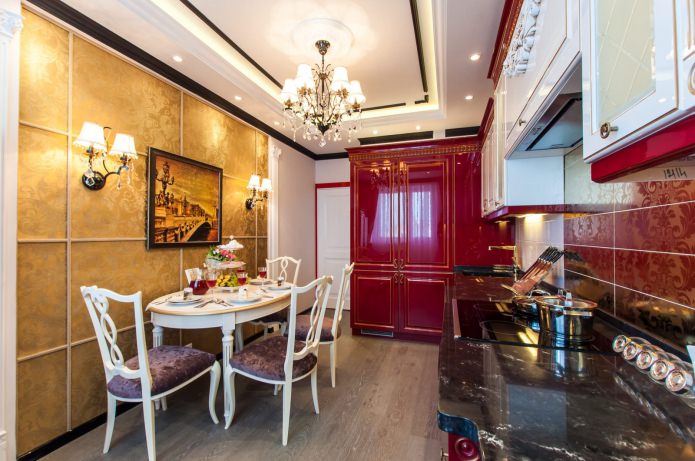


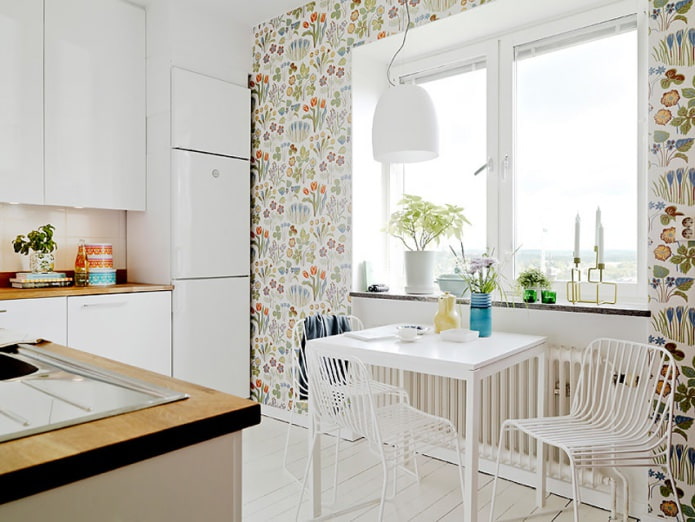
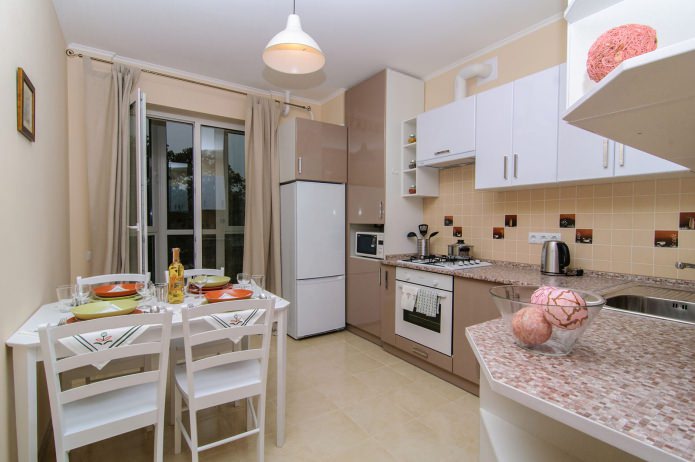
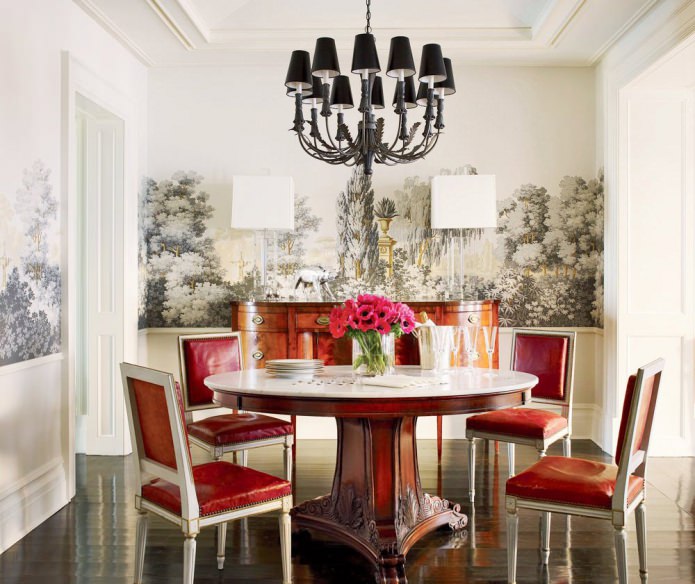
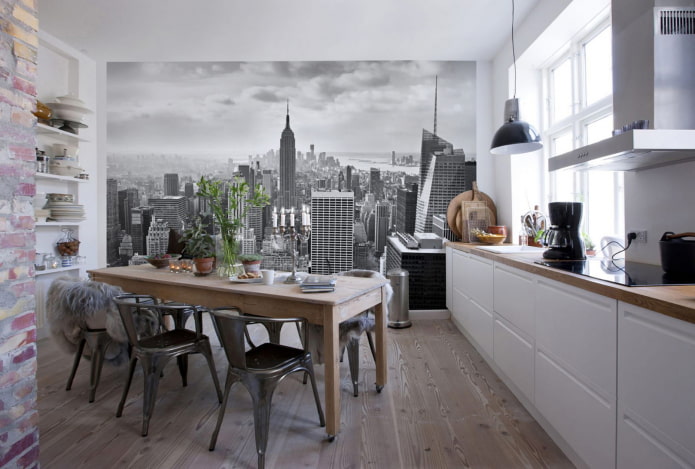
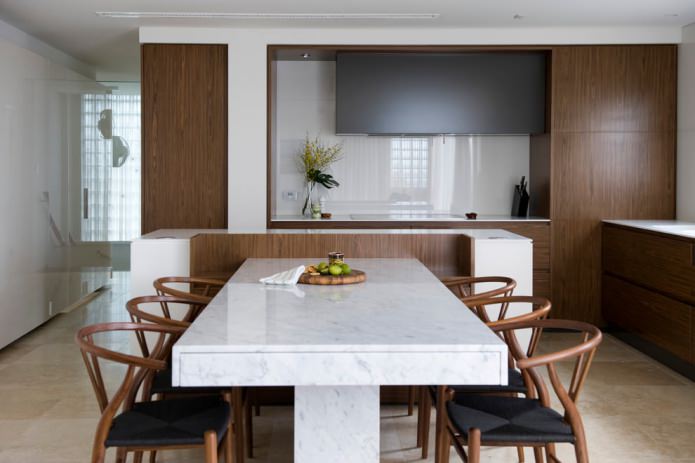
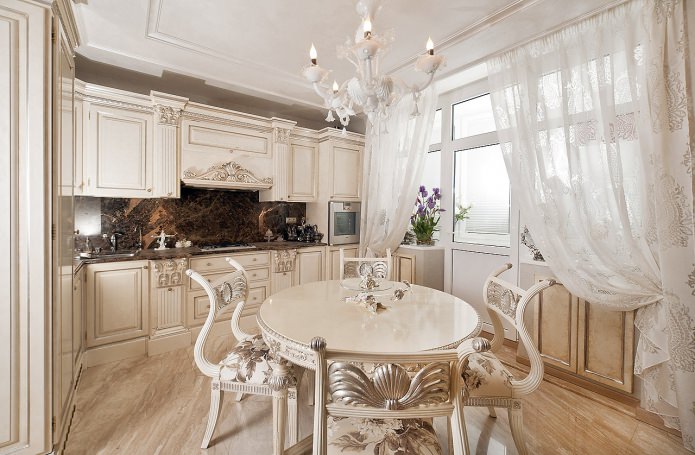
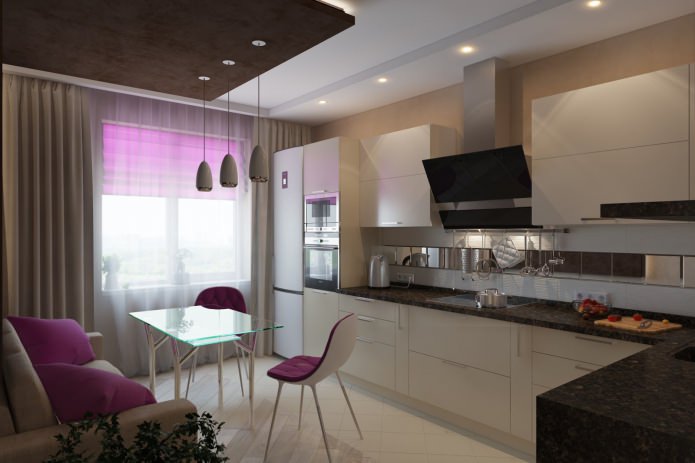
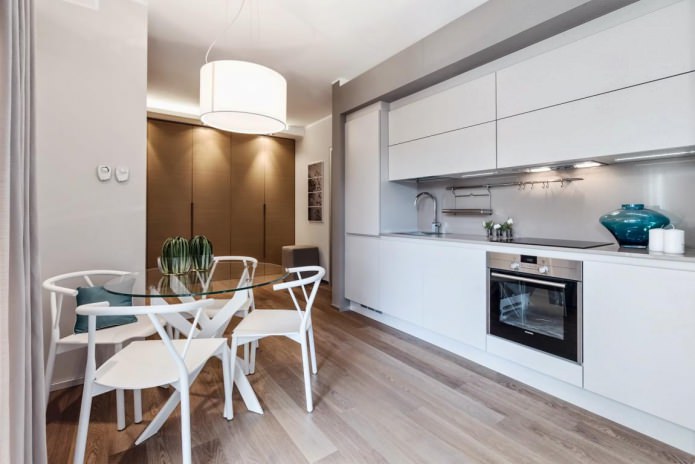
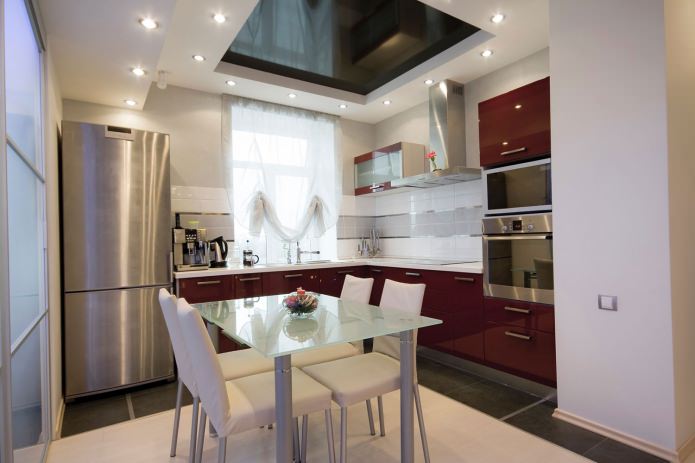
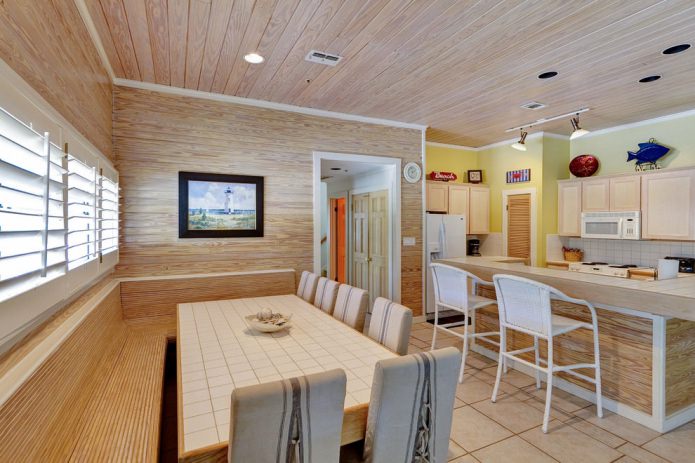

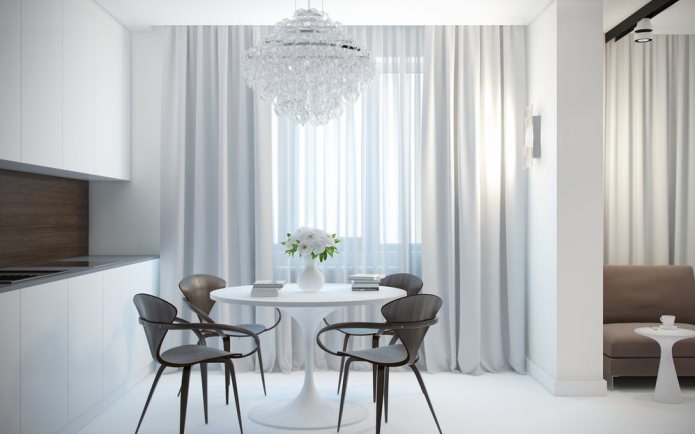

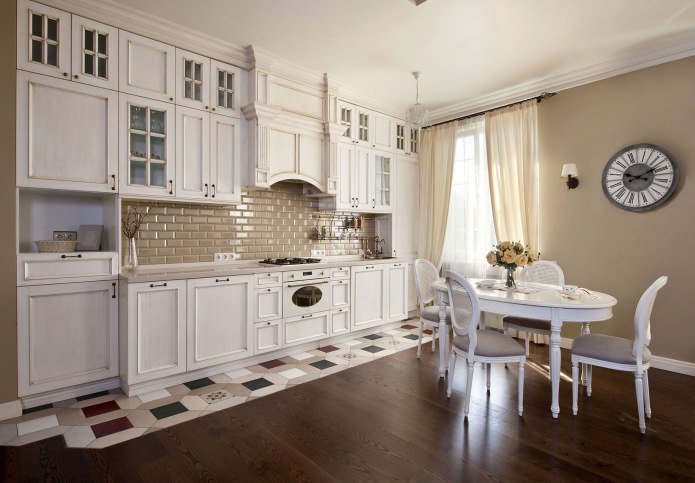
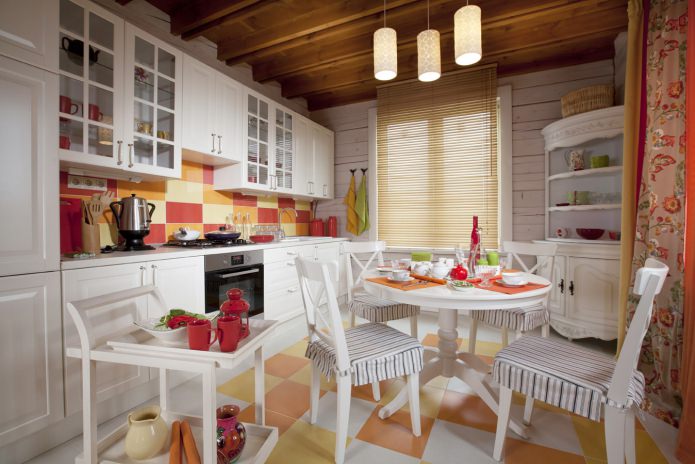
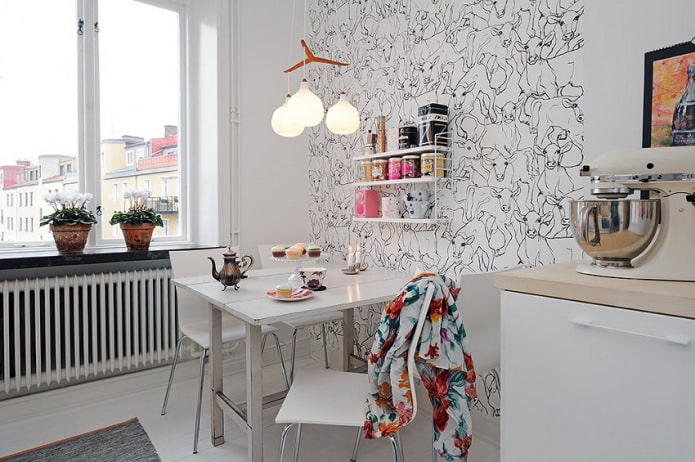
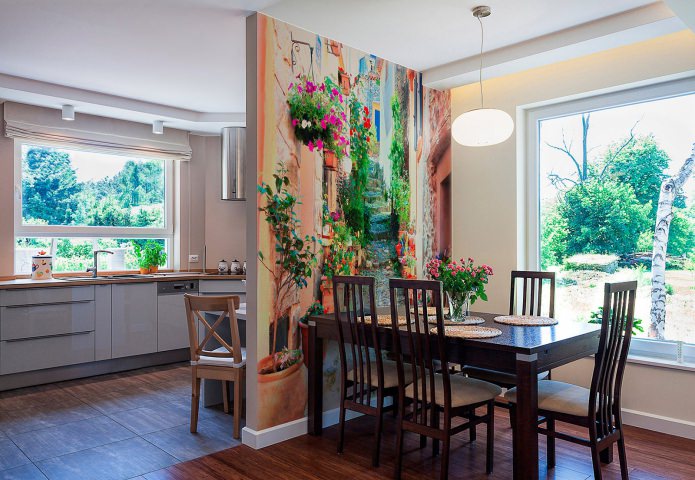
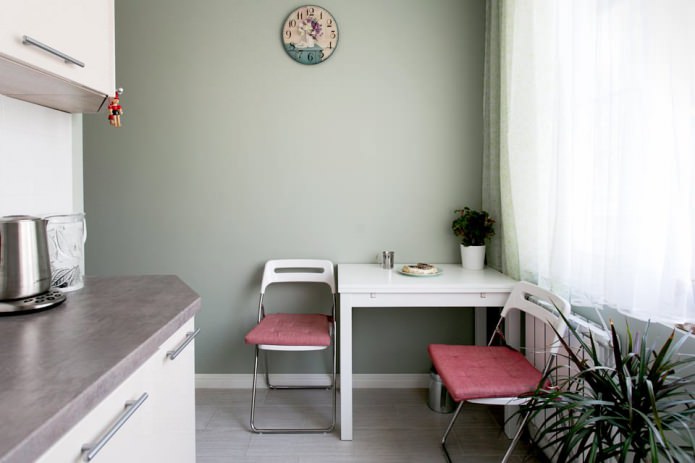
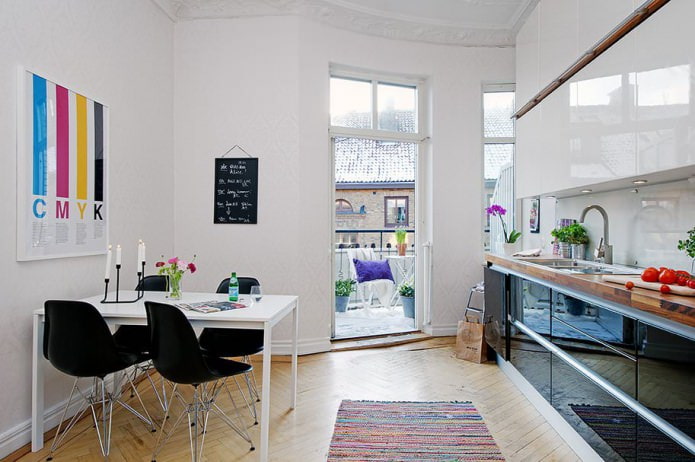
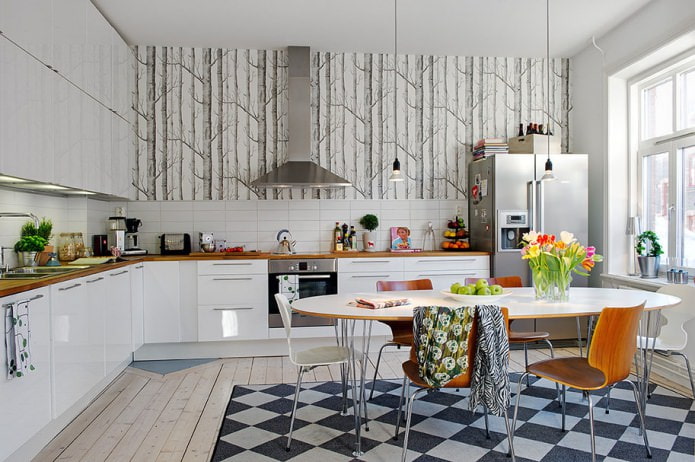
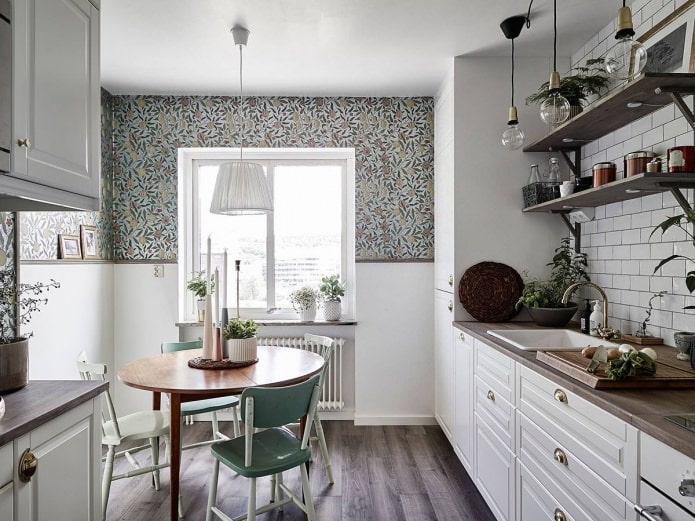

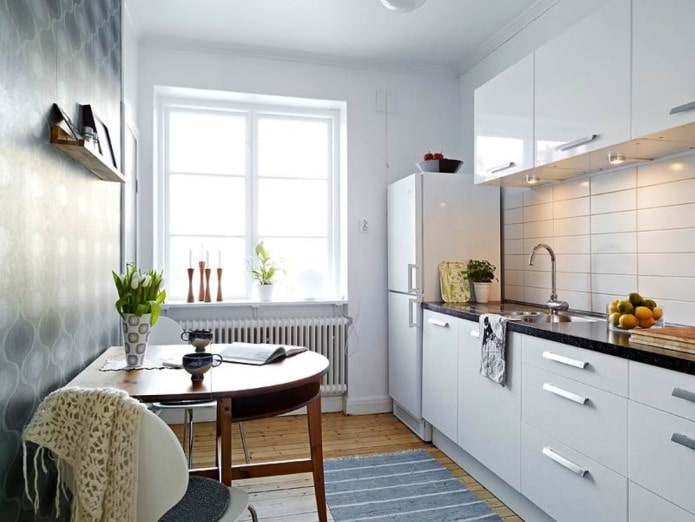
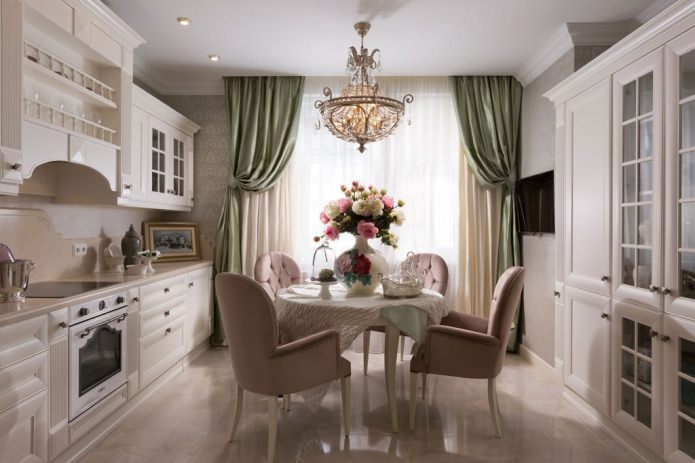

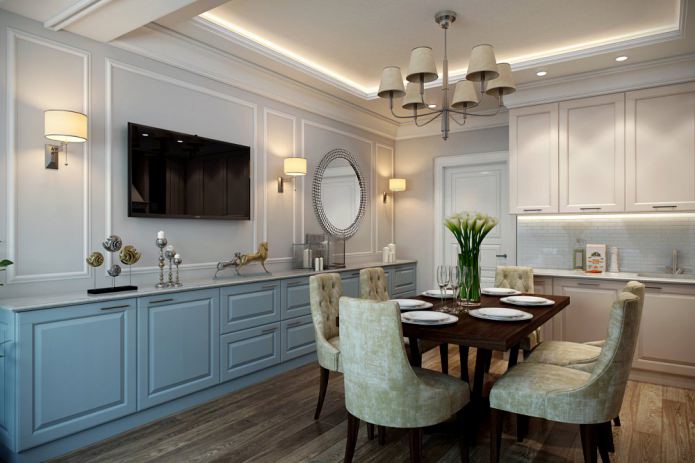

 How to choose the color of the sink for the kitchen?
How to choose the color of the sink for the kitchen? White kitchen: features of choice, combination, 70 photos in the interior
White kitchen: features of choice, combination, 70 photos in the interior Black suite in the interior of the kitchen: design, choice of wallpaper, 90 photos
Black suite in the interior of the kitchen: design, choice of wallpaper, 90 photos Modern design ideas for curtains for the kitchen - we make out the window stylish and practical
Modern design ideas for curtains for the kitchen - we make out the window stylish and practical Wallpaper design: 65 photos and ideas for a modern interior
Wallpaper design: 65 photos and ideas for a modern interior Design of a white kitchen with a black countertop: 80 best ideas, photos in the interior
Design of a white kitchen with a black countertop: 80 best ideas, photos in the interior